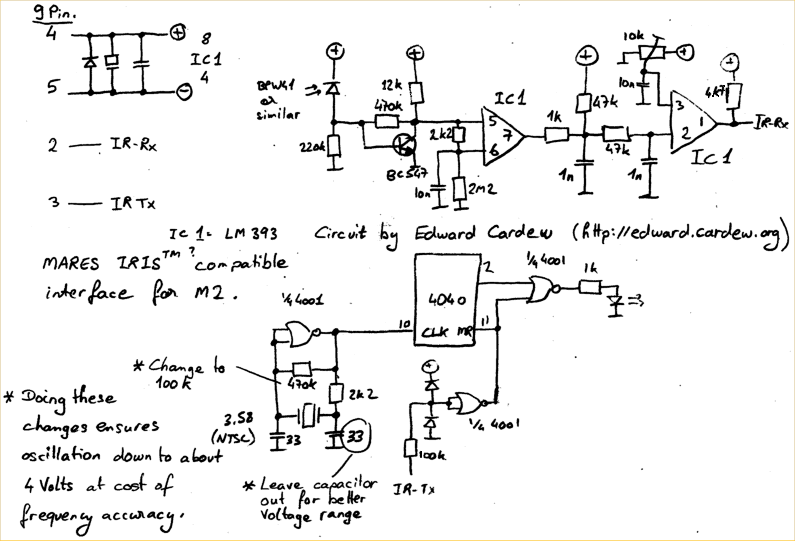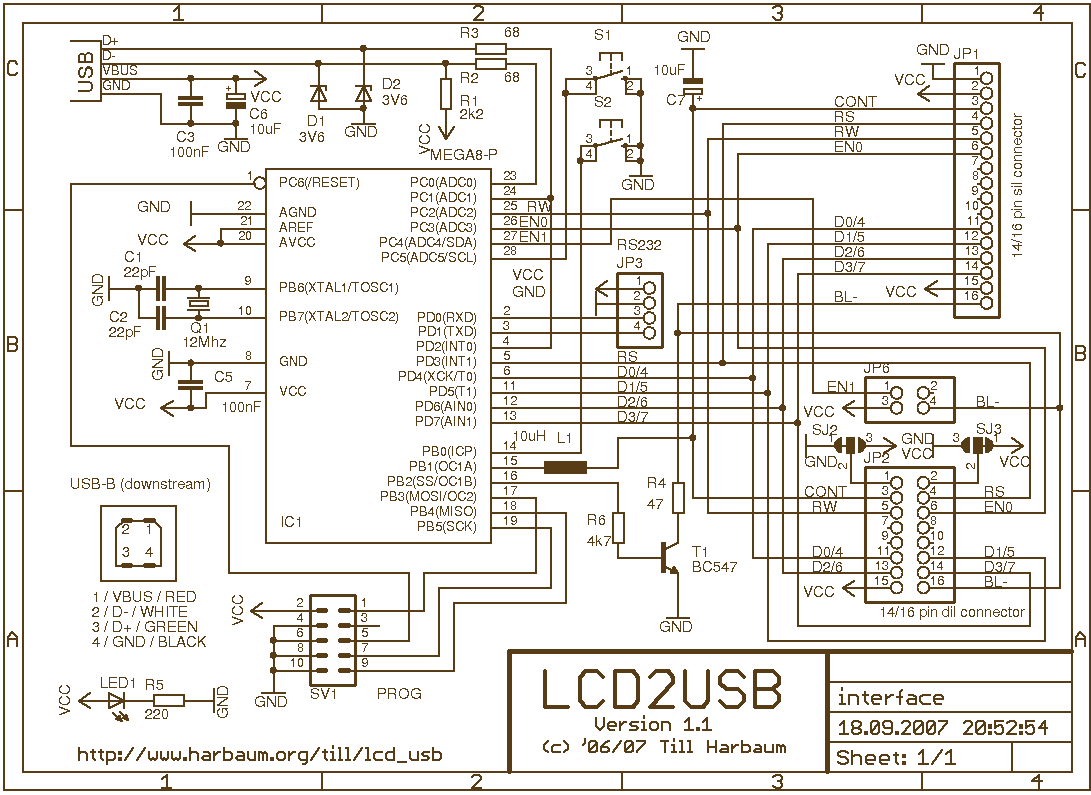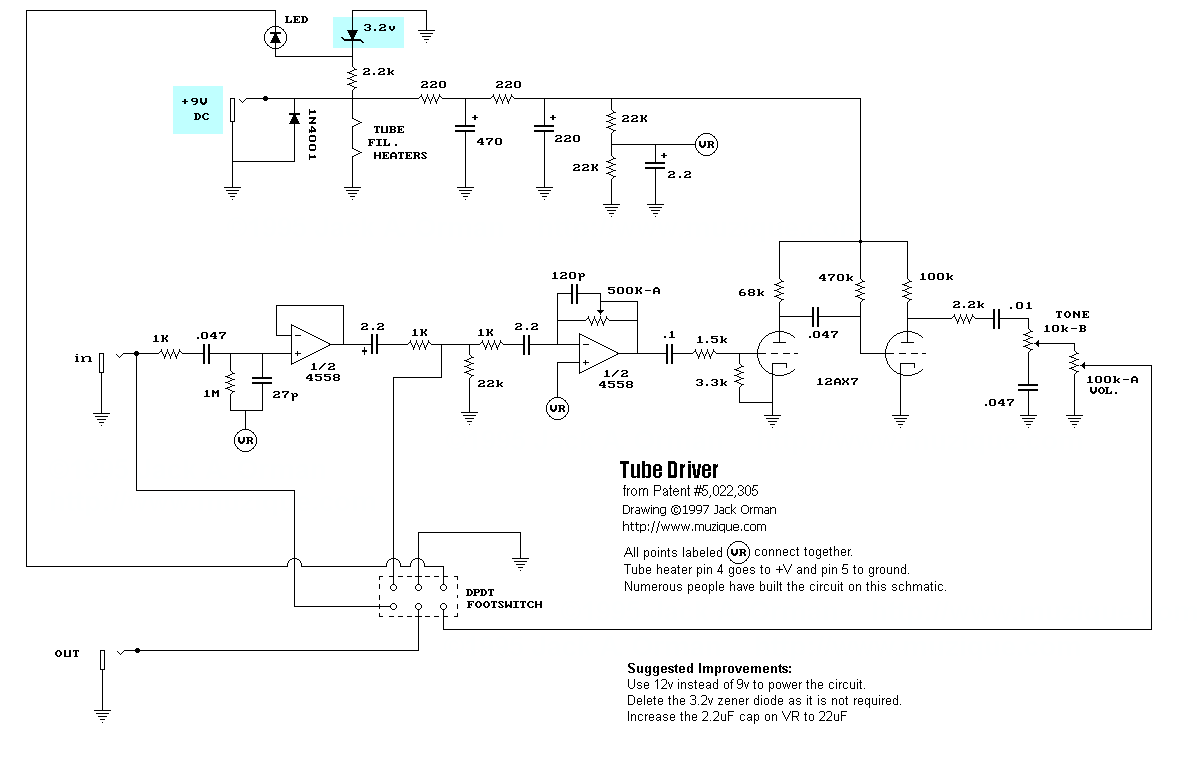
Human-Computer Interface Technology 2

Prototype 2 utilizes a common base to control various elements. This iteration includes a button that activates the tone only when pressed, along with a rotary potentiometer for volume adjustment. The circuit incorporates an Analog Devices ADXL3xx accelerometer that communicates acceleration data to a computer, specifically designed for the AdaFruit ADXL335 breakout board. The schematic includes analog connections: Vin, 3.3V, ground, z-axis, y-axis, and x-axis. The test pin is positioned at the edge of the board. This design was initially created on July 2, 2008, by David A. Mellis and later modified on February 19, 2013, by Rebecca Fiebrink. The example code is in the public domain. The constants defining the pins are as follows: groundpin (A2), powerpin (A0), xpin (A5), ypin (A4), and zpin (A3). The setup function initializes serial communication and configures the power and ground pins for the accelerometer. The loop function reads the accelerometer values and generates a tone based on the combined frequency readings from the x, y, and z axes. The instrument allows 1-3 players to interact with it, inspired by the concept of a musical Bop-It. Each prong of the instrument controls different sound aspects, although the project is limited to a single octave due to size constraints. The final product presents an engaging challenge for multiple players.
Prototype 2 is designed as a versatile electronic instrument that integrates various control mechanisms to enhance user interaction. The addition of a button allows for dynamic sound production, enabling tones to be generated only when the button is pressed. This feature adds an element of playability, making it suitable for different performance scenarios, whether solo or in a group setting.
The rotary potentiometer serves as a volume control, allowing users to adjust the audio output level easily. This component is vital for tailoring the listening experience, particularly in collaborative performances where multiple players may have different preferences for sound intensity.
The core of the prototype is the ADXL3xx accelerometer, which measures acceleration along three axes (x, y, and z). The accelerometer's readings are transmitted to a microcontroller, which processes the data to produce sound. The schematic indicates the connections between the accelerometer and the microcontroller, utilizing specific analog pins for power, ground, and data acquisition. The pin assignments ensure that the accelerometer operates correctly within the circuit, allowing for accurate readings.
The code implementation includes a setup function that configures the necessary pins for operation and initializes serial communication for data output. The loop function continuously reads the accelerometer values and calculates a cumulative frequency based on the x, y, and z readings. This frequency is then used to generate a tone through a buzzer connected to a designated output pin.
While the instrument is limited in terms of interaction range due to its stationary design, it offers a unique platform for musical exploration. The concept of using each prong to control different sound parameters encourages creativity and collaboration among players. Future iterations of the project may incorporate motion sensors to allow for a more dynamic playing experience, further expanding the instrument's capabilities. Overall, this prototype represents an innovative approach to interactive sound generation, combining electronics with musical expression.Prototype 2 uses the same base to control different elements. This time we have added a button to make the tone play only when it is pressed, as well as a rotary potentiometer for volume control. /* ADXL3xx Reads an Analog Devices ADXL3xx accelerometer and communicates the acceleration to the computer.
For AdaFruit ADXL335 breakout board. Modified from code at The circuit: analog 0: Vin analog 1: 3vo analog 2: ground analog 3: z-axis analog 4: y-axis analog 5: x-axis test pin is hanging off the edge :) created 2 Jul 2008 by David A. Mellis by Tom Igoe modified 19 Feb 2013 by Rebecca Fiebrink This example code is in the public domain.
*/ // these constants describe the pins. They won`t change: const int groundpin = A2; // analog input pin 2 const int powerpin = A0; // analog input pin 0 const int xpin = A5; // x-axis of the accelerometer const int ypin = A4; // y-axis const int zpin = A3; // z-axis void setup() { // initialize the serial communications: Serial. begin(9600); // Provide ground and power by using the analog inputs as normal // digital pins. This makes it possible to directly connect the // breakout board to the Arduino. If you use the normal 5V and // GND pins on the Arduino, you can remove these lines. pinMode(groundpin, OUTPUT); pinMode(powerpin, OUTPUT); digitalWrite(groundpin, LOW); digitalWrite(powerpin, HIGH); } void loop() { // print the sensor values: Serial.
print(analogRead(xpin); // print a tab between values: Serial. print(" "); Serial. print(analogRead(ypin); // print a tab between values: Serial. print(" "); Serial. print(analogRead(zpin); Serial. println(); int xfreq = analogRead(xpin); int yfreq = analogRead(ypin); int zfreq = analogRead(zpin); tone(8, xfreq+yfreq+zfreq); // delay before next reading: delay(100); } Our group built a an instrument that can be played by 1-3 people. Our inspiration was essentially creating a musical Bop-It. Each end of the three-prong instrument has a different control over the sound. We liked that the instrument can be played by a range of people, our project can be the basis for a solo, duet, or trio piece.
The device is limited in the range of interactions. While there are multiple useful controls, each sits on the unmoving object. With one more iteration we may have included the accelerometer to make a moving object. Additionally, we can only play within one octave because of limitations with the size of the Overall, we found the final product a fun and interesting challenge for multiple players. In this instrument, as mentioned before, each prong of the frisbee controls a different musical aspect of the sound that the buzzer plasimple testing sketch) { slideReading = analog(buttonPin); if (button last prototype, made aport time ser = serianext reading: double diff = fabs(analogRead(xpin) - BASELINE); if (diff 950, 1023, 1023, 320}; The player holds each piece in a hahe slider position ( delay(50); }
🔗 External reference
Prototype 2 is designed as a versatile electronic instrument that integrates various control mechanisms to enhance user interaction. The addition of a button allows for dynamic sound production, enabling tones to be generated only when the button is pressed. This feature adds an element of playability, making it suitable for different performance scenarios, whether solo or in a group setting.
The rotary potentiometer serves as a volume control, allowing users to adjust the audio output level easily. This component is vital for tailoring the listening experience, particularly in collaborative performances where multiple players may have different preferences for sound intensity.
The core of the prototype is the ADXL3xx accelerometer, which measures acceleration along three axes (x, y, and z). The accelerometer's readings are transmitted to a microcontroller, which processes the data to produce sound. The schematic indicates the connections between the accelerometer and the microcontroller, utilizing specific analog pins for power, ground, and data acquisition. The pin assignments ensure that the accelerometer operates correctly within the circuit, allowing for accurate readings.
The code implementation includes a setup function that configures the necessary pins for operation and initializes serial communication for data output. The loop function continuously reads the accelerometer values and calculates a cumulative frequency based on the x, y, and z readings. This frequency is then used to generate a tone through a buzzer connected to a designated output pin.
While the instrument is limited in terms of interaction range due to its stationary design, it offers a unique platform for musical exploration. The concept of using each prong to control different sound parameters encourages creativity and collaboration among players. Future iterations of the project may incorporate motion sensors to allow for a more dynamic playing experience, further expanding the instrument's capabilities. Overall, this prototype represents an innovative approach to interactive sound generation, combining electronics with musical expression.Prototype 2 uses the same base to control different elements. This time we have added a button to make the tone play only when it is pressed, as well as a rotary potentiometer for volume control. /* ADXL3xx Reads an Analog Devices ADXL3xx accelerometer and communicates the acceleration to the computer.
For AdaFruit ADXL335 breakout board. Modified from code at The circuit: analog 0: Vin analog 1: 3vo analog 2: ground analog 3: z-axis analog 4: y-axis analog 5: x-axis test pin is hanging off the edge :) created 2 Jul 2008 by David A. Mellis by Tom Igoe modified 19 Feb 2013 by Rebecca Fiebrink This example code is in the public domain.
*/ // these constants describe the pins. They won`t change: const int groundpin = A2; // analog input pin 2 const int powerpin = A0; // analog input pin 0 const int xpin = A5; // x-axis of the accelerometer const int ypin = A4; // y-axis const int zpin = A3; // z-axis void setup() { // initialize the serial communications: Serial. begin(9600); // Provide ground and power by using the analog inputs as normal // digital pins. This makes it possible to directly connect the // breakout board to the Arduino. If you use the normal 5V and // GND pins on the Arduino, you can remove these lines. pinMode(groundpin, OUTPUT); pinMode(powerpin, OUTPUT); digitalWrite(groundpin, LOW); digitalWrite(powerpin, HIGH); } void loop() { // print the sensor values: Serial.
print(analogRead(xpin); // print a tab between values: Serial. print(" "); Serial. print(analogRead(ypin); // print a tab between values: Serial. print(" "); Serial. print(analogRead(zpin); Serial. println(); int xfreq = analogRead(xpin); int yfreq = analogRead(ypin); int zfreq = analogRead(zpin); tone(8, xfreq+yfreq+zfreq); // delay before next reading: delay(100); } Our group built a an instrument that can be played by 1-3 people. Our inspiration was essentially creating a musical Bop-It. Each end of the three-prong instrument has a different control over the sound. We liked that the instrument can be played by a range of people, our project can be the basis for a solo, duet, or trio piece.
The device is limited in the range of interactions. While there are multiple useful controls, each sits on the unmoving object. With one more iteration we may have included the accelerometer to make a moving object. Additionally, we can only play within one octave because of limitations with the size of the Overall, we found the final product a fun and interesting challenge for multiple players. In this instrument, as mentioned before, each prong of the frisbee controls a different musical aspect of the sound that the buzzer plasimple testing sketch) { slideReading = analog(buttonPin); if (button last prototype, made aport time ser = serianext reading: double diff = fabs(analogRead(xpin) - BASELINE); if (diff 950, 1023, 1023, 320}; The player holds each piece in a hahe slider position ( delay(50); }
🔗 External reference





